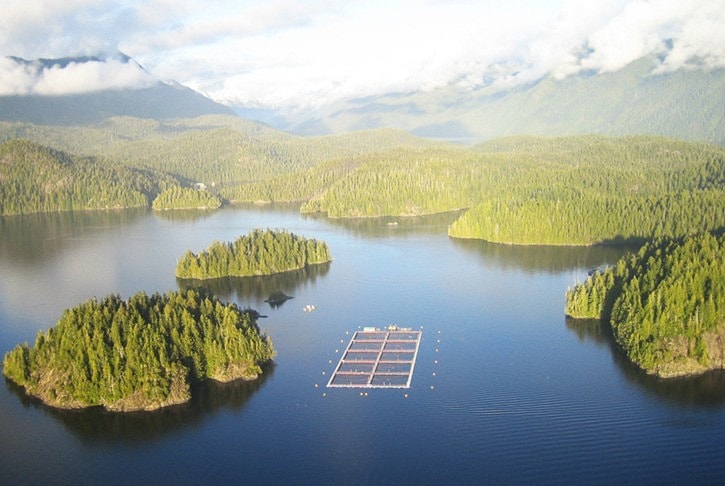A deep toxic algae bloom is killing salmon at two of Cermaq Canada’s farm sites in Clayoquot Sound.
Cermaq spokesperson Grant Warkentin told the Westerly the bloom has killed about 25,000 kilograms of salmon stock at the company’s Millar Channel and Ross Pass sites and Millar has been hit the hardest with roughly 10 per cent of its salmon population lost so far.
Warkentin said water samples were sent to Vancouver Island University and the bloom was confirmed to be toxic Chrysochromulina.
“It’s not totally unexpected given the changes that we’ve been seeing in the weather, not just in Clayoquot Sound but all around the Island,” he said.
“We’ve had a really warm and dry spring and that’s perfect growing conditions for algae and plankton and we’ve had warmer water temperatures as well; it’s been 2 C warmer than normal,”
He said algae typically stays near the ocean’s surface because it needs sunlight to grow and Cermaq can usually lessen a bloom’s effect by dropping tarps around an affected site and pumping clean water from the bottom of the pens but, in this case, the water being pumped up would just be more bloom.
“Our pens are about 15-20 metres deep and the algae has been blooming as deep as 25 metres so that’s been an issue…the sunlight has penetrated deep enough and the bloom has grown enough that it’s as deep as our farm systems,” he said. “There’s not a whole lot we can do other than wait it out.”
“Hopefully the weather will change and we’ll get a little bit of rain or it will cool down and then the plankton won’t have any food or light source to grow anymore and it will just die off.” Warkentin said.
He said the bloom would not affect either site’s harvesting schedule.
“One of them is currently harvesting and only has a few pens left, so that one will be done fairly quickly, and the other one’s probably going to be harvested later in the summer,” he said.
He said the economic impact would not be known until the sites are harvested.
“It will have an impact on the bottom line but this is why we have multiple sites; so we can balance things out and spread the risk around for when Mother Nature makes things a little more challenging than usual,” he said.
“It’s part of farming. You can’t control the weather so you just have to live with it.”
He said Cermaq operates 14 salmon farms in Clayoquot Sound and the company is wary of other blooms popping up.
“Given the strange weather that we’ve been having lately, there’s always a chance that a bloom could show up somewhere else too,” he said.
Local conservation group Clayoquot Action believes Cermaq’s farms are contributing to an algae-friendly environment because of the concentrated fecal matter being produced by its sites’ salmon populations.
“There’s a lot of nitrogen produced from the feces from the fish, so when we have naturally occurring algaes in the ocean they are fed by the excess nutrient and that causes them to bloom at a higher concentration than they normally would,” Clayoquot Action co-founder Bonny Glambeck told the Westerly.
“We are experiencing warmer waters, probably from climate change, and that, in combination with the nutrient loading, is causing these algae blooms to happen earlier and with more intensity.”
She said the only way to prevent this proliferation of algae is to take salmon farming companies out of the ocean and into closed containment systems.
“They need to not be using the ocean as an open sewer and they need to move into closed containment and, that way, they can filter their sewage and treat it,” she said. “That is the solution to this problem.”
She added the current bloom would also affect wild salmon populations as young salmon cannot swim deeper than the bloom’s 25-metre depth.
“Any sea creature that cannot move to 25 metres or deeper is at risk of dying from this,” she said.
Warkentin doubted fecal matter from salmon farms would impact algae growth.
“Fish waste is at depth below the site, where sunlight can’t really penetrate, so it’s pretty doubtful that there’s any link between the algae bloom and waste from the farms,” he said.
Glambeck disagreed with this assessment.
“The sewage is being moved around by water currents; it’s in the water column,” she said.
“It’s not something that we’re discovering here in Clayoquot Sound; it’s an issue that aquaculture has around the world.”
